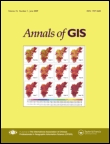
Annals of GIS
Scope & Guideline
Unlocking the Power of Geospatial Knowledge
Introduction
Aims and Scopes
- Geospatial Analysis and Modeling:
The journal emphasizes the use of advanced geospatial analysis techniques, including remote sensing, spatial statistics, and machine learning, to model and understand spatial patterns and processes. - Urban Studies and Planning:
Research often explores urban dynamics, accessibility, and resilience, especially in the context of rapid urbanization and environmental challenges, making significant contributions to urban planning methodologies. - Environmental and Ecological Applications:
Many studies focus on environmental monitoring, land use/land cover change, and ecological modeling, reflecting the journal's commitment to addressing sustainability and conservation issues. - Human Mobility and Social Dynamics:
The journal frequently publishes research on human mobility patterns, social interactions, and their implications for public health and urban planning, particularly in the context of crises such as pandemics. - Data Science and GeoAI:
There is a strong emphasis on the application of big data analytics and artificial intelligence in geospatial contexts, exploring new methodologies for data processing and analysis.
Trending and Emerging
- Impact of COVID-19 on Spatial Analysis:
Research focusing on the spatial impacts of the COVID-19 pandemic has surged, highlighting how geographic methodologies can be applied to understand and manage public health crises. - Integration of Big Data and GIS:
There is an increasing emphasis on leveraging big data sources, such as social media and mobility data, to enhance spatial analysis, indicating a shift towards data-driven approaches in GIS research. - Sustainable Development and Green Cartography:
Emerging studies are increasingly focused on sustainability, with a particular interest in green cartography and its role in promoting sustainable practices and environmental awareness. - Human Mobility and Urban Dynamics:
Research on human mobility patterns, especially in urban contexts, is becoming more prominent, reflecting the growing importance of understanding social dynamics in spatial planning. - Advanced Remote Sensing Technologies:
The use of advanced remote sensing technologies, including UAVs and high-resolution satellite imagery, is trending, showcasing the journal's commitment to innovative data collection methods.
Declining or Waning
- Traditional GIS Applications:
There appears to be a waning focus on conventional GIS applications that do not integrate newer technologies or interdisciplinary approaches, as the field shifts towards more innovative methodologies. - Static Mapping Techniques:
Research centered around static mapping techniques and traditional cartography has diminished, with a greater emphasis now placed on dynamic, interactive, and real-time data visualizations. - Local Case Studies:
While local case studies remain important, there is a noticeable trend towards broader, more global analyses, which may indicate a decline in the frequency of highly localized research. - Descriptive Spatial Analysis:
Studies that primarily focus on descriptive statistics without robust analytical frameworks or predictive modeling are becoming less common as the journal emphasizes more rigorous and innovative analytical approaches.
Similar Journals
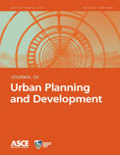
JOURNAL OF URBAN PLANNING AND DEVELOPMENT
Fostering Sustainable Growth in Urban Landscapes.The JOURNAL OF URBAN PLANNING AND DEVELOPMENT, published by the ASCE-AMER SOC CIVIL ENGINEERS, stands as a pivotal platform in the realms of urban studies, civil and structural engineering, and development. With an ISSN of 0733-9488 and E-ISSN of 1943-5444, this journal aims to disseminate high-quality research addressing critical urban planning challenges, fostering innovative solutions, and contributing to sustainable development practices. Spanning from its inception in 1979 to the anticipated issues up to 2024, the journal proudly occupies the Q2 category across multiple disciplines, including Civil and Structural Engineering, Development, Geography, Planning and Development, and Urban Studies. Its noteworthy Scopus rankings reflect its influence, notably being positioned in the 76th percentile in Urban Studies. With no open access options currently available, the journal remains a selective forum for scholarly discourse, attracting researchers, professionals, and students eager to engage with cutting-edge developments in urban planning and design.
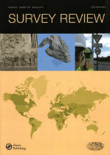
SURVEY REVIEW
Connecting Disciplines Through Critical Insights and ResearchSURVEY REVIEW is a distinguished journal published by Taylor & Francis Ltd, focusing on a diverse range of disciplines including Civil and Structural Engineering, Computers in Earth Sciences, and Earth and Planetary Sciences. With an ISSN of 0039-6265 and an E-ISSN of 1752-2706, this journal has been a vital resource for scholarly communication since its inception in 1963. Positioned within the Q2 and Q3 quartile categories according to the latest rankings, it is recognized for its significant contributions to advancing knowledge in multiple fields, specifically holding a rank of 64/159 in Earth and Planetary Sciences and 32/73 in Computers in Earth Sciences. Researchers, professionals, and students benefit from its critical insights into complex engineering and scientific challenges. Although SURVEY REVIEW is not open access, it remains a highly cited journal, making it an essential avenue for disseminating pivotal findings that impact both academia and industry practices.
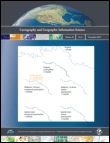
Cartography and Geographic Information Science
Shaping Tomorrow’s Geography Through Scholarly ExcellenceCartography and Geographic Information Science is a premier journal published by Taylor & Francis Inc, focusing on the interdisciplinary realms of geography, planning, and technological innovation. With an impressive impact factor and ranking in the top quartiles across various categories, including Q1 in Geography, Planning and Development and Q2 in Civil and Structural Engineering, this journal serves as an essential resource for researchers, professionals, and students alike, promoting cutting-edge research and advancements in cartography and geographic information systems. The journal disseminates high-quality articles that explore both theoretical and practical aspects of geographic information, aiming to enhance the understanding and application of spatial data. As the field evolves, Cartography and Geographic Information Science remains a vital forum for innovation and scholarly dialogue, offering accessible content to a global audience. With its commitment to rigor and relevance, it plays a critical role in advancing the landscapes of geography and environmental sciences.

ISPRS International Journal of Geo-Information
Innovating geoinformation technologies for global impact.ISPRS International Journal of Geo-Information, published by MDPI, stands at the forefront of the field of geospatial sciences, contributing valuable knowledge and research insights since its inception in 2012. This open access journal, which boasts an impressive collection of articles that emphasize the integration of geographic information systems (GIS) in Earth and planetary sciences, currently achieves a remarkable standing, with a 2023 impact factor ranking in the Q1 category for both Earth and Planetary Sciences and Geography, Planning and Development. Researchers and professionals engaged in the study of spatial data, remote sensing, and innovative geoinformation technologies will find the journal an essential resource, offering diverse perspectives and methodologies. With its open access model, the journal aims to promote the dissemination of knowledge globally, fostering collaboration among scholars while pushing the boundaries of research in geoinformation disciplines. The journal is based in Switzerland and is well-positioned to contribute significantly to the understanding and application of geospatial data for societal advancements.
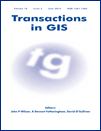
Transactions in GIS
Elevating Geographic Scholarship to New HeightsTransactions in GIS is a premier academic journal published by WILEY, dedicated to advancing the field of Geographic Information Science (GIS). With an ISSN of 1361-1682 and an E-ISSN of 1467-9671, this journal has continually contributed valuable insights since its inception in 1996, transforming the landscape of GIS research and application. Covering a broad scope within Earth and Planetary Sciences, it holds a notable Q2 ranking and stands in the 74th percentile among its peers as per Scopus rankings. The journal serves as a critical platform for researchers, professionals, and students who seek to disseminate and engage with innovative GIS methodologies, applications, and theoretical advancements. With a commitment to quality and rigor, Transactions in GIS remains a vital resource for those at the forefront of geographic research and analysis.

Geomatik
Unleashing the potential of geospatial technologies.Geomatik is a pioneering open-access journal dedicated to advancing the field of geomatics, encompassing disciplines such as geospatial data analysis, remote sensing, and geographic information systems. Founded in 2016 by the esteemed Geomatik Journal publisher, this peer-reviewed platform aims to disseminate high-quality research and innovative methodologies to a global audience. With its E-ISSN 2564-6761, Geomatik facilitates accessibility to cutting-edge studies that address vital challenges in environment monitoring, urban planning, and spatial data management. The journal not only encourages collaboration among researchers and practitioners but also serves as an essential resource for students seeking to deepen their understanding of geomatic sciences. Its commitment to open access fosters scholarly exchange and enhances visibility for authors, contributing to significant advancements within the geomatics community.

Boletim de Ciencias Geodesicas
Pioneering Discoveries in the Dynamic World of GeodesyBoletim de Ciências Geodésicas is an esteemed academic journal published by the Universidade Federal do Paraná within its Centro Politécnico. Focused on the dynamic field of Earth and Planetary Sciences, this Open Access journal has been a pivotal resource since 1997, fostering the dissemination of critical research and innovative methodologies. With an impact factor indicative of its relevance in the discipline, Boletim de Ciências Geodésicas ranks in the Q3 quartile for Earth and Planetary Sciences as of 2023, showcasing its commitment to quality scholarship in a competitive field. Researchers and students alike will benefit from access to cutting-edge findings, given its broad scope that encompasses various aspects of geodesy and related sciences. The journal's convergence of research from 2005 to 2024 ensures that it remains at the forefront of emerging trends and fundamental developments in the discipline, further enhancing its esteemed reputation in the academic community.

International Journal of Applied Earth Observation and Geoinformation
Empowering Research through Earth Observation Excellence.International Journal of Applied Earth Observation and Geoinformation is a premier peer-reviewed journal published by Elsevier, focusing on the integration and application of earth observation and geoinformation technologies across diverse fields. With an open access model established in 2020, this journal enhances accessibility and dissemination of research crucial for addressing global challenges related to climate change, resource management, and sustainable development. The journal occupies a notable position within the academic community, featuring a Q1 ranking in multiple categories including Computers in Earth Sciences, Earth-Surface Processes, and Global and Planetary Change, reflecting its significant impact and relevance in these disciplines. It is recognized for its high-quality articles that explore innovative methodologies and applications, making it an essential resource for researchers, practitioners, and students alike who seek to advance their understanding of earth dynamics and geospatial technology. The journal is indexed in Scopus with impressive rankings that underscore its high citation impact and scholarly influence, with an emphasis on providing a platform for the latest findings in management, monitoring, and policy in environmental science.
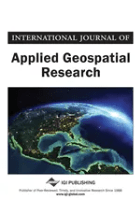
International Journal of Applied Geospatial Research
Transforming data into actionable knowledge across disciplines.International Journal of Applied Geospatial Research is an esteemed publication dedicated to advancing the field of geospatial research. Published by IGI Global, this journal provides a platform for innovative studies from 2010 to 2024 that encourage multidisciplinary contributions across Earth and planetary sciences and geography. While currently not offering open access, the journal's focus on applied research ensures that it remains highly relevant to both academics and industry professionals alike. With an ISSN of 1947-9654 and an E-ISSN of 1947-9662, it has been indexed in various databases, reflecting its emerging significance with rankings such as Q4 in Earth and Planetary Sciences and Geography according to Scopus, placing it at the intersection of critical research and practical application. Researchers, professionals, and students can expect insightful articles that enhance understanding and drive innovation in geospatial applications essential for informed decision-making in a rapidly changing world.

PAPERS IN REGIONAL SCIENCE
Shaping the future of regional development through research.PAPERS IN REGIONAL SCIENCE, published by Wiley, is a leading international journal dedicated to advancing the understanding of regional science and interdisciplinary approaches to geography and environmental planning. With an impressive impact factor and a prestigious Q1 ranking in both Environmental Science and Geography, Planning and Development, this journal serves as a critical platform for disseminating high-quality research from 1955 to 2024. Covering a diverse scope including regional development, spatial analysis, and environmental issues, it facilitates discussion and knowledge exchange among scholars and practitioners. The journal is recognized for its rigorous peer-review process and its commitment to addressing pressing societal challenges through research. As a vital resource for researchers, professionals, and students alike, PAPERS IN REGIONAL SCIENCE fosters innovation and collaboration within the field, contributing to a deeper understanding of the complexities of regional systems.